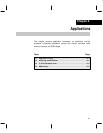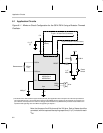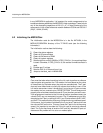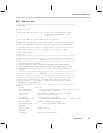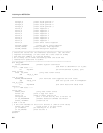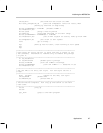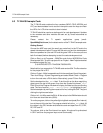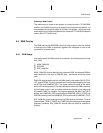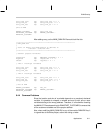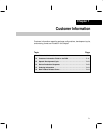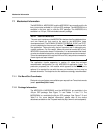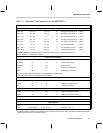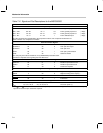
RAM Overlay
6-9Applications
Creating a New Project
The easiest way to create a new project is to copy the entire TI–TALKS604
directory into another directory and renaming the project file as desired. It is
not necessary to change the paths of the files in the project – this will be done
automatically by the code development tool. Note that TI-TALKS604 indicates
version 604 of TI-TALKS code.
6.4 RAM Overlay
The RAM map for the MSP50C6xx family is quite complex. Here the method
of overlaying the RAM is explained, together with examples of how to add
variables for customer code.
6.4.1 RAM Usage
Information about the RAM overlay is contained in the following three include
files (.IRX).
MAIN_RAM.IRX
RAM.IRX
SPK_RAM.IRX
MAIN_RAM.IRX contains definitions for customer RAM. Variable and RAM for
other modules (in the form of RAM.IRX files – see below) should be added
here.
RAM.IRX contains definitions for the RAM used by the coders (MELP, CELP,
LPC, and ADPCM). The only constants which should be changed by the user
are STACK and RAMEND_DSP. The former defines the size of the stack,
which is 20 words by default. The latter defines the amount of RAM consumed
by the largest coder in use, and hence defines the location of the beginning
of customer RAM. For example, if a program uses both the MELP and CELP
coders, then RAMEND_DSP must be equal to RAMEND_MELP. If CELP and
ADPCM are being used, the RAMEND_DSP must be set to RAMEND_CELP.
SPK_RAM.IRX contains definitions for the RAM used by the coders. Three of
these variable, TEMP1, TEMP2, and TEMP3 may be used as general purpose
temporary variables. SPK_RAM.IRX should never be edited or modified in
anyway.



